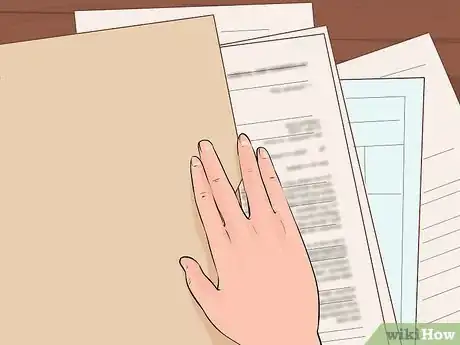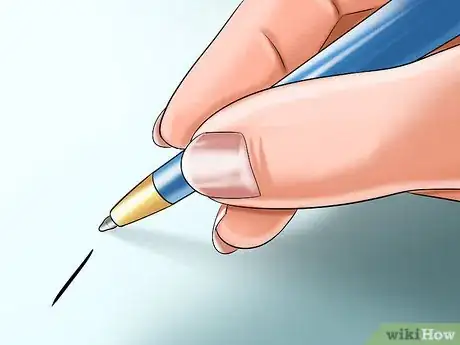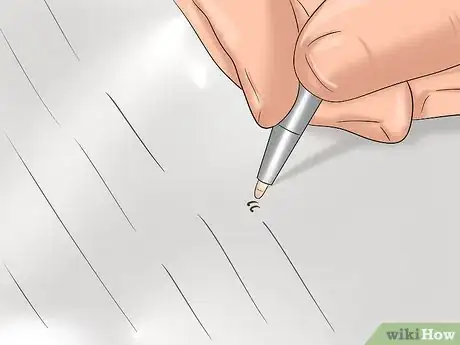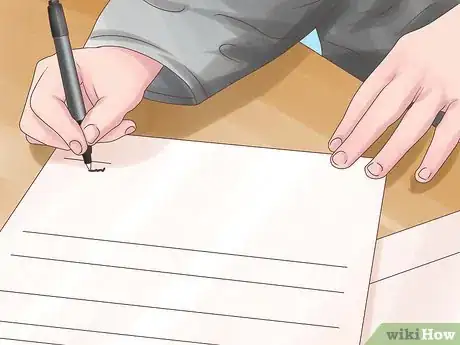This article was written by Jennifer Mueller, JD. Jennifer Mueller is an in-house legal expert at wikiHow. Jennifer reviews, fact-checks, and evaluates wikiHow's legal content to ensure thoroughness and accuracy. She received her JD from Indiana University Maurer School of Law in 2006.
There are 12 references cited in this article, which can be found at the bottom of the page.
wikiHow marks an article as reader-approved once it receives enough positive feedback. In this case, 93% of readers who voted found the article helpful, earning it our reader-approved status.
This article has been viewed 30,806 times.
The purpose of a civil trial is to resolve disputes over issues of fact. Before trial, the other side may file a motion for summary judgment. This motion claims that there are no facts in dispute, so the case comes down to a question of law for the judge to decide. To defeat a motion for summary judgment, you must demonstrate that there is, at least, one dispute over a fact that is important to the case.[1]
Steps
Building Your Case
-
1Consider hiring an attorney. If you respond to a motion for summary judgment, you will be expected to understand the court's rules of evidence and civil procedure just as well as an attorney would.
- Even if you don't want – or cannot afford – an attorney to represent you for the entire case, you might consider having an attorney look over your response to summary judgment and coach you through the process.
-
2Read the motion carefully. To respond to your opponent's motion, you must first know exactly what he is arguing, and what evidence or case law he is using as support.
- Take notes as you read. If your opponent cites any rules or case law, write down the citation. If he references a particular piece of evidence, write that down as well.
Advertisement -
3Check the procedural rules for filing a motion. Make sure the other side has complied with all the rules for filing the motion. If he has not, you may be able to get the motion thrown out on those grounds.
- For example, if the other side served you improperly, the motion can be dismissed on those grounds. However, keep in mind that if you file a response opposing the motion, the court will consider any objection for violation of procedural rules waived. For that reason, you should review the rules of procedure the other side needed to follow before you start working on your response.[2]
-
4Make note of your deadline for filing a response, and any parameters such as a page limit. Follow the court's time and page limits precisely – don't assume you'll get an extension or a free pass just because you're not an attorney.
- Federal law and many states give you 30 days to respond to a summary judgment motion. However, in some states this deadline is as little as 10 days away. Check the rules of the court in which the motion will be heard to make sure, and then mark that date on your calendar.
-
5Review the standard for a summary judgment motion. In both state and federal court, a judge will grant a summary judgment motion if the party who filed the motion can prove that there is no genuine dispute regarding a material fact, that is, one important to deciding the case.[3]
- Generally, to know which facts are "material" to the case, you must know the elements of the alleged offense. Material facts are those that pertain to one of the elements of the offense.
- For example, suppose you sued for damages when you slipped and fell on a banana peel while visiting your local zoo. The zoo would be liable for your injuries if you can prove that the zoo was negligent in clearing the walkway. One of the elements of negligence is a duty to prevent whatever accident or injury took place.
- Whether the zoo had a schedule for cleaning the walkway, and whether that schedule was followed by employees, would be material facts, because an established schedule would show that the zoo took responsibility for keeping the walkway clear. However, the color of the zoo employees' shirts on the day you visited would not be a material fact. Whether their shirts were green or blue would not affect the zoo's responsibility for keeping the walkways clear.
-
6Research case law. In addition to statutes and rules, U.S. courts also ground their decisions on court precedent, the opinions other courts have made previously in similar cases.
- On the website of your state's highest court, there may be a searchable database of court opinions.[4] If there's not, you can visit the law library in either a nearby law school or your local courthouse.
- Start with the cases filed by your opponent. Compare and contrast those cases with your own and see if you can find a way to argue that those decisions don't apply to your case.
- Continue reading cases to find summary judgment cases that are similar to your own, where the decision supports your argument.
-
7Analyze the evidence available in your case. You want to find pieces of evidence that demonstrate dispute over a factual matter, including documents or testimony.
- For example, suppose your case involves a traffic accident, and your opponent argues that everyone agrees the light was red. If you have a witness who claims the light was green, that witness's testimony creates a dispute over an important fact in the case.
- In the example, you would want to attach an affidavit from that witness to your response to the summary judgment motion.
Drafting Your Response
-
1Create your caption. The caption includes the name of the court, the names of the parties, and the case number.[5] Since the information remains the same in all documents in your case, you can simply copy it from a previously filed document.
-
2Title your response. Your title tells the court what your document is about. Here, your title would be something like "Response to Motion for Summary Judgment."
- Different courts prefer different formats, but the title usually is two lines below the caption, centered, and in bold-face type. Check previously filed documents from your case and use them as a guide.
-
3Begin your response. In your first sentence, identify yourself as either the plaintiff or the defendant, state whether you are represented by an attorney, and state that you are responding to the other side's motion for summary judgment, and believe that motion should be denied.
-
4Start the body of your response with your best reasons the motion should be denied. Judges are busy people, and you don't want to waste her time. Tell her up front why the motion should be denied, and then follow up with your supporting arguments.
- Lead with your best argument, then your second-best, and so on. If you can anticipate any counter-arguments the other side might raise, mention them and explain why they are wrong.
- Use one numbered paragraph for each fact, and tell the court exactly what evidence you have to show that the issue is a material fact and that it remains in dispute.[6]
-
5Write your concluding paragraph. In your final paragraph, state that for all the reasons you listed, you are asking the court to deny the motion for summary judgment.[7]
-
6Format your signature block. Drop down a couple of lines, then type "I swear the information contained above is true and correct to the best of my knowledge and belief." Drop down a few more lines to leave space for your signature, then type a blank line.
- Under your signature line, type your name, address, phone number, email address, and any other information that will aid the court or other parties in contacting you.
-
7Include a notary block, if necessary. Your court may require your response to be notarized if it includes any statements of fact. You can search online for the appropriate notary block for your state and county, then copy and paste that below your signature block.[8]
-
8Add a Certificate of Service. Many states provide a specific form for the Certificate of Service that you can download from the website of your state's highest court.
- If your state does not have a Certificate of Service form, copy the Certificate used in one of the previous documents in your case. Make sure you change the name of the document and the dates before you print it and attach it to your response.
- If the other side is represented by an attorney, you should serve the attorney, not the individual.
-
9Sign your response. If you've included a notary block, you cannot sign your response until you are in the presence of a notary.
- Many banks offer notary services free to their customers. You can also find notaries and courthouses or at private businesses such as check-cashing companies, but you may have to pay a small fee to use them.
Filing Your Response
-
1Assemble your response together with any attachments and make copies. Although you should check with the clerk's office to make sure, you probably will need at least three copies of the entire packet.[9]
-
2Take your response to the clerk's office. Take your original documents and copies to the clerk's office where the motion was filed. Pay the filing fee, if necessary, and the clerk will file your originals and stamp your copies "filed."[10]
-
3Serve your response on the other party. Once you've filed your response, you must send a copy of it to the other side, otherwise, they'll never know you filed it.
- Use the same method you stated you would use in the Certificate of Service. Typically certified mail is acceptable and you don't have to have your response served personally. Retain your certified mail receipts as well as the notice you get back when service is completed.
-
4Wait for a response from the other side. In most courts, the side that filed the motion is given an opportunity to respond to your response, usually with a shorter deadline.
- Take note of anything mentioned in this response, if filed, because it will be mentioned at the hearing. Try to find arguments to refute any of those claims.
Arguing Your Response
-
1Attend your hearing. When the other side filed the motion, the clerk scheduled a date for the hearing of that motion. Check the notice you received with the motion so you know when the hearing is scheduled.
- Arrive at court early so you have plenty of time to park and go through security before the time of your hearing. Dress conservatively and respectfully, and leave any cell phones or electronic devices at home or in your car.
- Speak only to the judge and not directly to the opposing side or to their attorney. Stand when speaking and address the judge as "Judge" or "Your Honor."[13]
-
2Listen while the other side argues the motion. The party who filed the motion will have the first opportunity to speak to the judge.
- You should pay attention as your opponent presents his case, and take notes if you hear him raise particular points that you want to dispute. Do not interrupt him while he speaks; you'll get your chance.
-
3Present your argument. After the other side finishes, you will have the opportunity to speak to the judge and explain your argument for why the motion should be denied. You also should be prepared to answer any questions the judge might have.
-
4Wait for the judge's order. After the judge hears both sides, she will render her decision. She may tell you right then, or you may have to wait to receive an order in the mail.[14]
- The judge has the ability to grant the motion in its entirety, deny the motion in its entirety, or to grant it in part and deny it in part, a ruling called a "partial summary judgment."
- In some courts, the judge will expect the prevailing party to draft the motion. In others, the judge may have someone on her staff draft it. Make sure you know how to get a copy of the order.
- If you are asked to prepare the order, follow the same format as you did for your response, titling this document "Order." In the body, state the date the hearing was held, the title of the motion argued, and what the judge ruled. At the judge's signature block, which you can find on an old order or get from the clerk.[15]
-
5Consider filing an appeal. If the judge does not rule in your favor, your case will not go trial. As a result, you have the right to file an appeal, usually within 30 days of the ruling. Check your state's rules of appellate procedure to learn when your deadline is and what documents you have to file.[16]
References
- ↑ https://www.law.cornell.edu/rules/frcp/rule_56
- ↑ http://www.courts.mo.gov/courts/ClerkHandbooksP2RulesOnly.nsf/0/a9fdabe676220f8986256ca600521544?OpenDocument
- ↑ http://legal-dictionary.thefreedictionary.com/Question+of+Fact
- ↑ http://www.tsc.state.tn.us/courts/supreme-court/opinions
- ↑ http://legal-dictionary.thefreedictionary.com/caption
- ↑ http://www.superiorcourt.maricopa.gov/sscdocs/pdf/gn10fz.pdf
- ↑ http://www.superiorcourt.maricopa.gov/sscdocs/pdf/gn10fz.pdf
- ↑ http://www.state.me.us/sos/cec/notary/samplenotaryforms.pdf
- ↑ http://www.superiorcourt.maricopa.gov/sscdocs/pdf/gn10fz.pdf
- ↑ http://www.superiorcourt.maricopa.gov/sscdocs/pdf/gn10fz.pdf
- ↑ http://www.occourts.org/general-public/fee-schedule/
- ↑ http://courts.oregon.gov/OJD/OSCA/acs/records/pages/filingfees.aspx
- ↑ http://www.fljud13.org/Portals/0/Forms/pdfs/fiu/12rules.pdf
- ↑ http://www.courts.state.ny.us/courts/ad2/forms/Law%20Guardian%20handbook/New%20forms%2011122008/Supreme%20Court%20Order%20for%20Observation%20and%20Evaluation.pdf
- ↑ http://www.courts.state.ny.us/courts/ad2/forms/Law%20Guardian%20handbook/New%20forms%2011122008/Supreme%20Court%20Order%20for%20Observation%20and%20Evaluation.pdf
- ↑ http://www.supremecourt.ohio.gov/LegalResources/Rules/appellate/AppellateProcedure.pdf





















































































